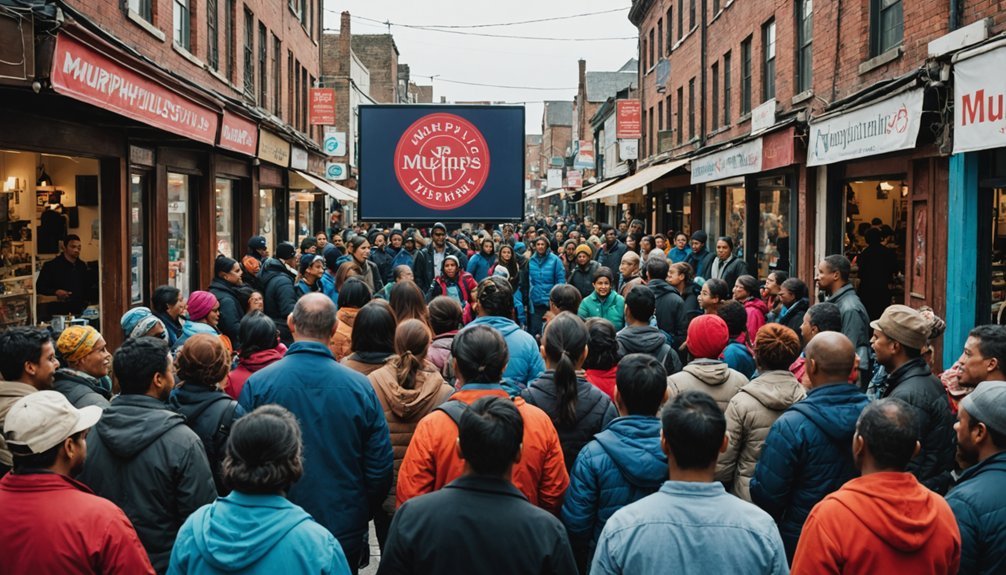
As you explore the multifaceted strategies Murphy employs to drive social change, consider how unity among athletes not only amplifies their voices but also strengthens their stance on pressing social issues. By prioritizing advocacy over their athletic roles, they shift the public's focus to the injustices at hand. This approach, coupled with strategic communication and direct engagements with policymakers, lays a robust foundation for impactful change. What could this mean for the future of activism in sports?
Key Takeaways
- Murphy prioritizes social issues, leading teams to focus on justice over sports.
- He fosters unity, using collective spirit to drive social change.
- By engaging directly with decision-makers, Murphy facilitates impactful policy reforms.
- He emphasizes effective communication to clearly articulate social change goals.
- Murphy collaborates with grassroots organizations to amplify diverse voices and actions.
Emphasizing Unity and Collective Action
While Calvin Murphy proudly emphasizes the use of "collectively" among athletes, it's clear that unity in the NBA has evolved into a powerful emotional force. This collective spirit isn't just about making statements; it's about mobilizing for social justice. You can see the impact when teams stand together, addressing systemic issues that disproportionately affect the African-American community. Their unity underscores not only an emotional commitment but also a strategic one, engaging directly with decision-makers to spark immediate change. The younger players, in particular, are pivotal, driving the movement forward with urgency and a clear focus on achieving tangible outcomes. This shift towards collective action marks a significant evolution in how athletes influence society, turning their shared experiences into a catalyst for real change.
Prioritizing Social Issues Over Sports
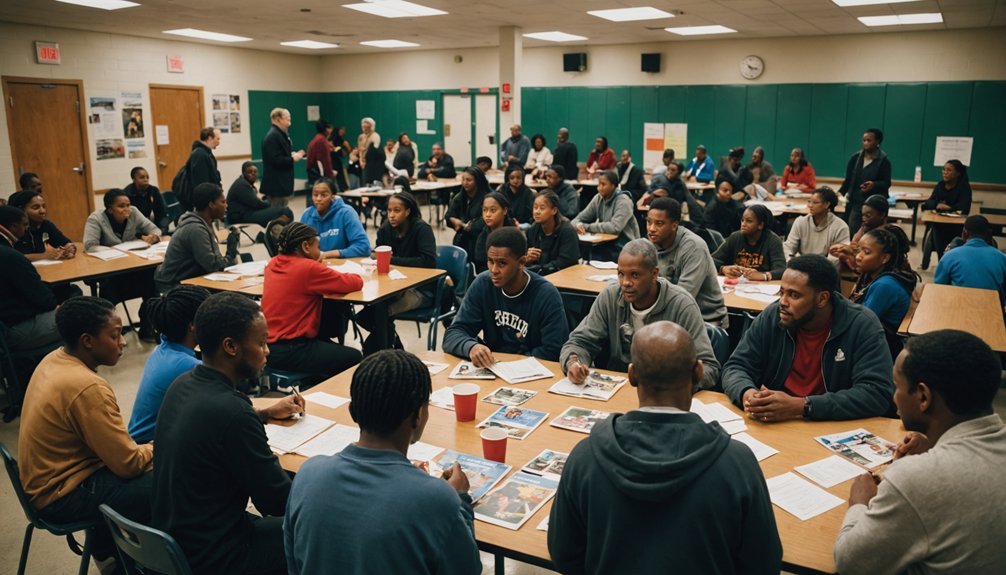
As societal issues take precedence over sports, Calvin Murphy has voiced strong approval for athletes who step up as leaders in the quest for social change. You've seen the NBA take a stand first during the work stoppage, showing a united front in their commitment to justice. This isn't just about making statements; it's about being the "drum majors" for social change that resonate with today's activism-driven youth. The emotional toll of injustices faced by African-Americans has only fueled this fire, pushing players to use their platforms for immediate action. They're not just waiting around; they're demanding quick, sustained change, proving that sports can indeed be a powerful catalyst for addressing critical societal issues.
Facilitating Effective Communication for Change
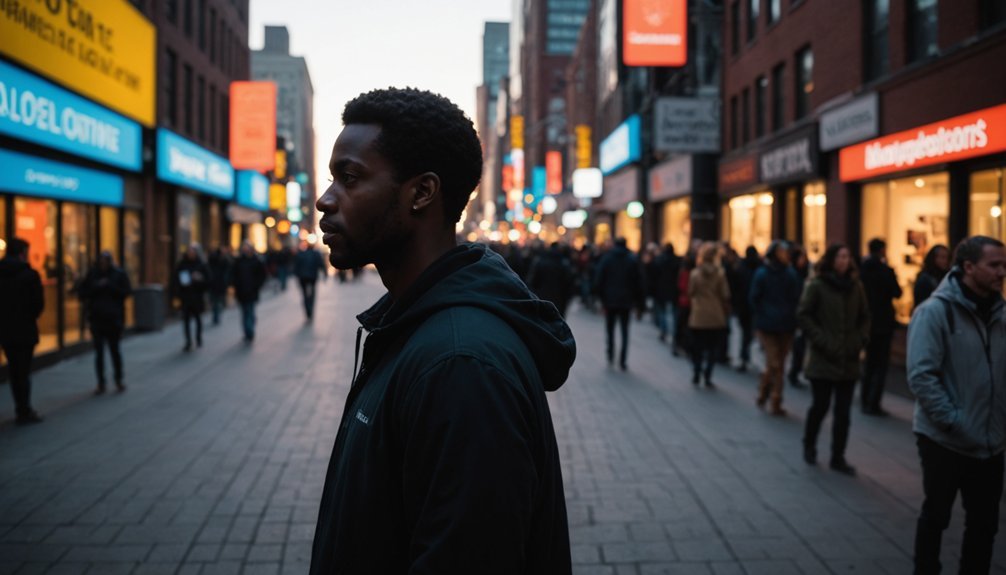
Effective communication stands at the heart of achieving meaningful social change. When you articulate your goals clearly and engage with diverse stakeholders, including those with opposing views, you're setting the stage for broader understanding and cooperation. One thing Calvin Murphy emphasizes is the use of "collectively" among athletes discussing social justice. This isn't just about semantics; it's a strategic choice that fosters unity and underscores the shared commitment to change. By establishing strong partnerships and keeping communication channels clear within organizations like USAID, you align efforts with public sentiment, paving the way for swift and effective action. Remember, when you communicate effectively, you're not just sharing information—you're inviting others into a transformative process.
Acknowledging the Emotional Impact of Social Injustices
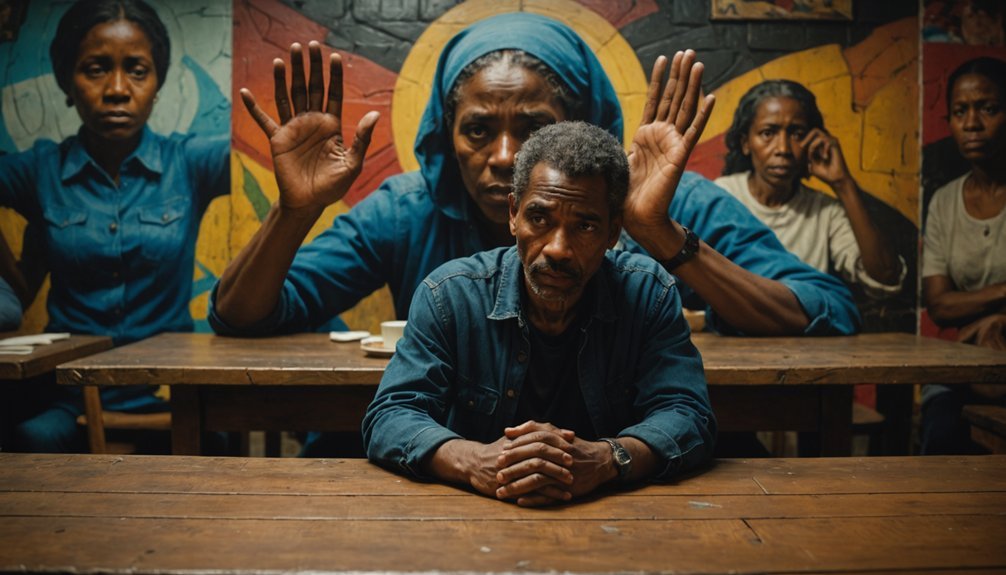
If you've felt overwhelmed by the stories of systemic racism and social injustices, you're not alone. The emotional toll on communities, especially African-Americans, is profound, reflecting generations of resilience and struggle. Social media has changed everything, amplifying voices and uniting a younger generation in activism that brings an urgency to address these injustices.
| Impact | Response |
|---|---|
| Emotional Fatigue | Renewed Activism |
| Generational Struggle | Athlete Leadership |
| Slow Progress | Demand for Immediate Action |
Calvin Murphy's stance that social issues should come before sports underscores how athletes are pivotal in leading the charge. This collective effort fosters hope and insists on tangible changes, showing that when we acknowledge and validate these emotional impacts, we pave the way for real progress.
Engaging With Decision-Makers for Tangible Results
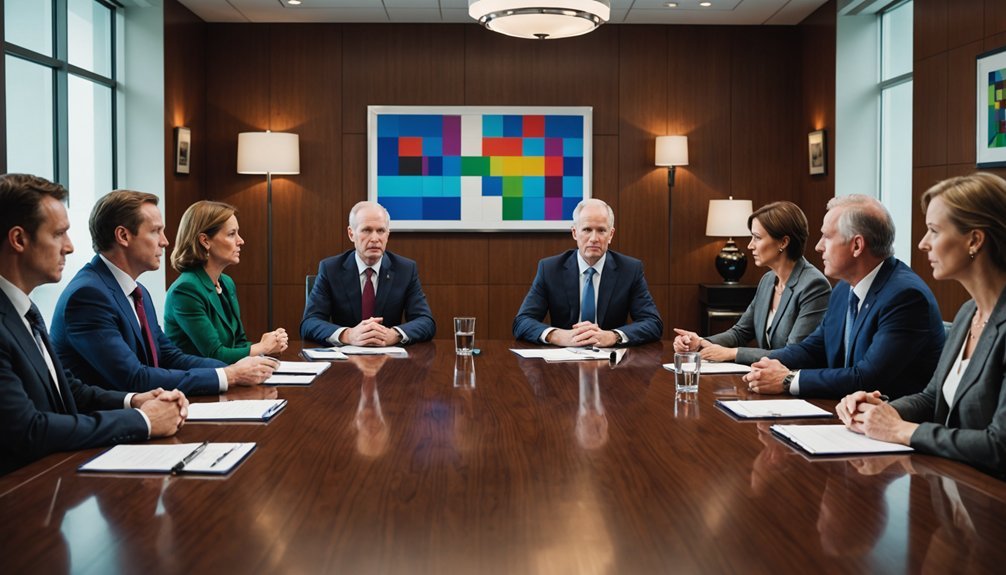
Acknowledging the emotional impact of social injustices sets the stage for deeper involvement in transformative actions. When you engage with decision-makers, you're not just sharing grievances; you're proposing solutions shaped by everyday experiences. As a high school athlete, your perspective is invaluable. It brings a fresh urgency to the table, compelling community leaders and politicians to listen. Forming coalitions with grassroots organizations and established groups amplifies your voice, ensuring it resonates in the halls of power. By maintaining clear, direct communication, you help forge relationships that can lead to real change. Remember, every conversation with a policymaker is a step towards turning the unity of athletes into actionable policy reforms that benefit marginalized communities.
Frequently Asked Questions
How Does Murphy Measure the Impact of His Social Change Initiatives?
To gauge the effectiveness of his initiatives, Murphy tracks specific metrics. You'd see him using surveys and feedback tools to assess participant satisfaction and behavioral changes. He also analyzes data trends over time to identify progress and areas needing improvement. By collaborating with community leaders and stakeholders, he guarantees that the impact aligns with the broader goals. All these methods combined help him fine-tune his approach for better outcomes.
What Challenges Has Murphy Faced in His Advocacy Work?
You've faced several challenges in your advocacy work, Murphy. Resistance from traditional systems, limited funding, and public skepticism are major hurdles. Engaging diverse communities effectively while maintaining momentum in the face of slow legal processes also proves difficult. Additionally, balancing media portrayal and managing the burnout among your team are constant concerns. These obstacles test your resilience but also highlight the critical need for strategic planning and community support in driving social change.
How Does Murphy Secure Funding for His Projects?
To secure funding for your projects, you need to connect with potential donors who share your vision. You'll pitch your initiatives effectively by highlighting their impact and sustainability. Networking at events and leveraging social media platforms also plays an essential role. Always present clear, measurable goals and outcomes to build trust. Don't forget to follow up with supporters to maintain and possibly expand their financial commitment to your cause.
What Role Do Volunteers Play in Murphy's Projects?
In Murphy's projects, volunteers are essential. You'll find them handling everything from administrative tasks to direct service delivery. They aren't just helping hands; they're at the heart of the mission, driving the project's success and sustainability. By volunteering, you're not only contributing your skills but also gaining unique insights and experiences. Each volunteer's effort amplifies the project's impact, making a real difference in the community.
How Does Murphy Incorporate Technology in His Outreach Efforts?
You're curious how Murphy utilizes tech in his outreach? He integrates various digital tools to enhance communication and engagement. By using social media platforms, he effectively spreads his message and rallies support. Additionally, Murphy employs data analytics to tailor his strategies and measure impact. His approach also includes mobile apps to facilitate volunteer coordination and event management, ensuring his initiatives reach a broader audience and garner substantial community involvement.
Conclusion
You can see how Murphy's approach effectively drives social change. By uniting athletes and prioritizing critical issues, you leverage a powerful platform for advocacy. Your communication bridges diverse groups, while recognizing the emotional weight of injustice spurs further commitment. Most importantly, by engaging directly with policymakers, you guarantee that the solutions are not only heard but acted upon. These strategies aren't just about making noise; they're about making a real, impactful difference.